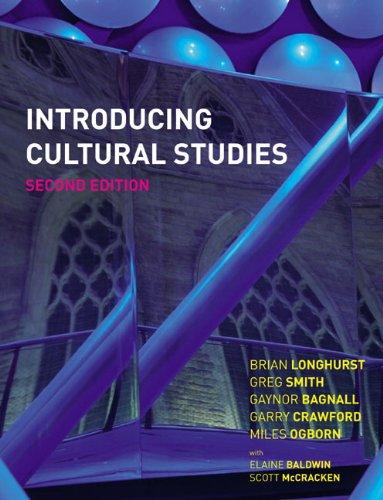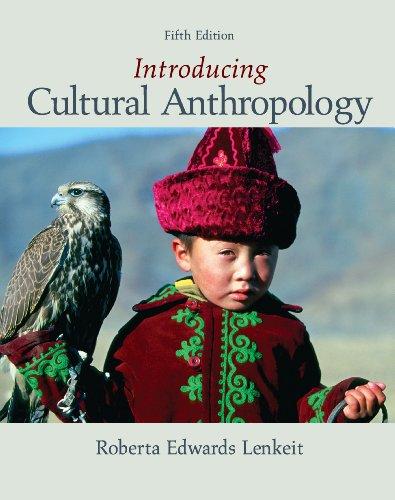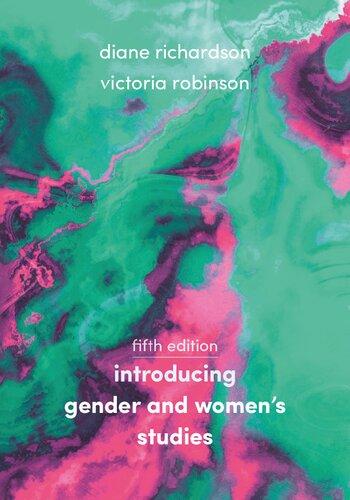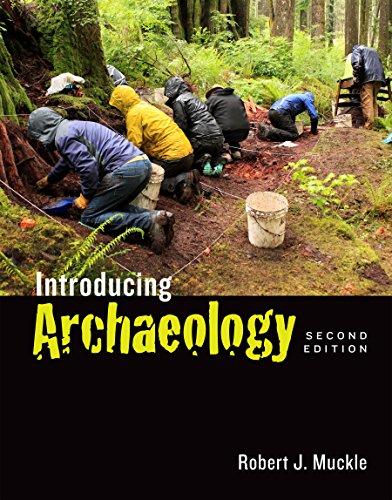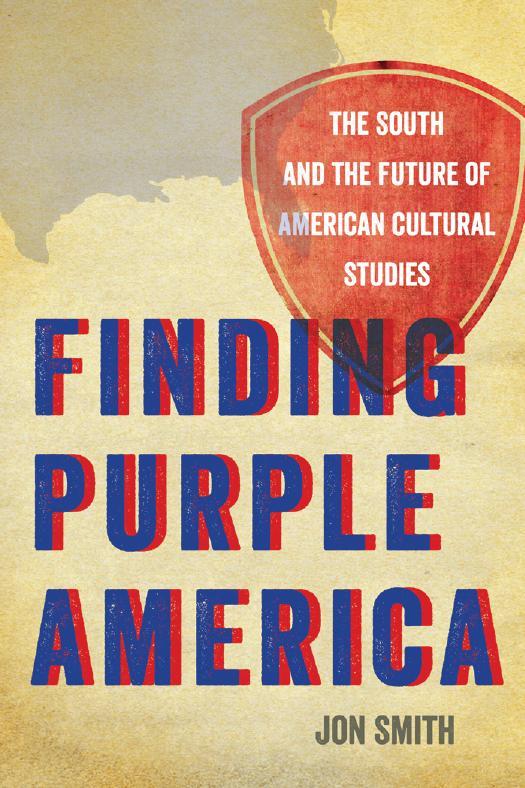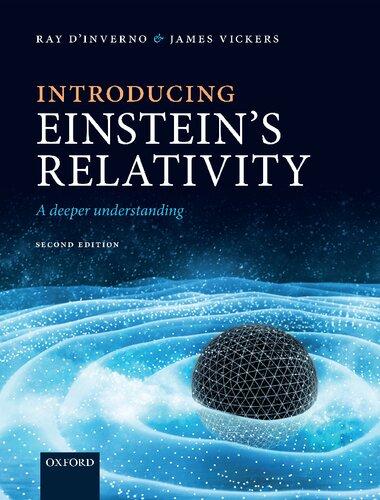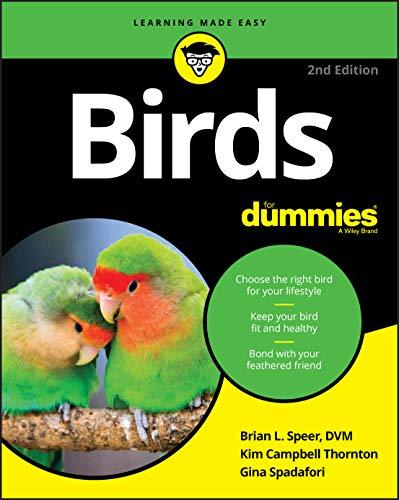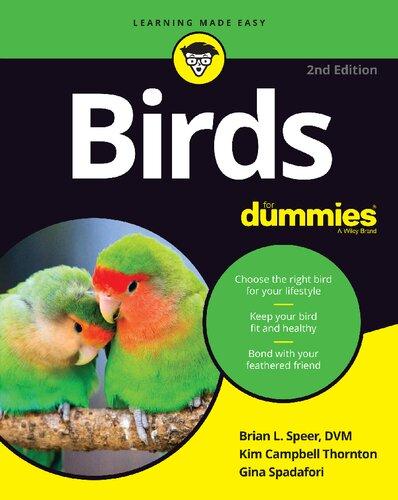Acknowledgements
All books are the products ofa number ofinfluences. Textbooks are even more so.Many people over more years than we would care to remember have affected this book.We would like to begin by acknowledging this general debt.We are also particularly grateful to the anonymous reviewers for their helpful comments.
Gaynor Bagnall would like to thank Graham,Claire and Jack for their support and enthusiasm for all things cultural.
Garry Crawford would like to thank his friends and family for being there,and most importantly Victoria Gosling for her continued support.
Brian Longhurst would like to thank the students who have worked with him on the material in this book.His biggest debt is to Liz for all her support. James and Tim are always there and his parents can’t be thanked enough.
Miles Ogborn would like to thank the students on GEG247 Society,Culture and Space at QMUL who road-tested the material for Chapter 5 and have shown what works and what does not.
Greg Smith would like to thank Julie Jones for instructive discussions about a range oftopics covered in this book.Particular thanks are due to Juli Weir for permission to use her excellent photograph in Chapter 8.
The authorial team who produced this edition ofthe book were Brian Longhurst,Greg Smith,Gaynor Bagnall,Garry Crawford and Miles Ogborn.We would like to record our special thanks to two authors for the first edition,Elaine Baldwin and Scott McCracken,who were not able to participate in the second.
Publisher’s acknowledgements
We are grateful to the following for permission to reproduce copyright material:
Illustrations
Figure 1.1,Indian woman taking photograph in Peacock Court,© Martin Harvey/Corbis;Figure 2.3, ‘Communication between men and women’,from J. Fleming, Never Give Up (1992),with permission ofthe author,Jacky Fleming;Figure 2.4,from S.Hall (1980),‘Encoding/decoding’,in S.Hall,D.Hobson,A. Lowe,P.Willis (eds), Culture,Media,Language: Working Papers in Cultural Studies, 1972–79,p.130, with permission ofCengage Learning Services;Figure
3.2,‘World debt cartoon’,from the Observer,© Chris Riddell;Figures 5.2 and 5.4,Thomas Gainsborough, ‘Mr and Mrs Andrews’,and John Constable,‘The HayWain’,The National Gallery,London;Figure 5.3,Yinka Shonibare,‘Mr and Mrs Andrews Without Their Heads’,The National Gallery ofCanada;Figure 5.5, Paul Henry,‘The Potato Diggers’,The National Gallery ofIreland;Figure 5.6,reprinted by permission of Foreign Affairs,72(3),copyright 1993 by the Council on Foreign Relations,Inc.;Figure 5.7,PRM 1981.12.1 Yoruba carving,1930s,Pitt Rivers Museum,Oxford; Figure 5.8,from G.Gómez-Peña (2000), Dangerous Border Crossings: The Artist Talks Back;‘Cyber-Vato’, with permission ofCengage Learning Services;
Figure 5.9,‘European gun with inlaid shell decoration from the Western solomon Island’,The Australian Museum;Figure 5.10,‘Joseph Banks with part ofhis collection ofPacific objects’,with permission ofthe National Maritime Museum;Figures 6.1,6.2,Corbis and 6.9 and 6.10,©Reuters/CORBIS;Figure 6.3,© The Press Association;Figure 6.8,‘The toppling ofthe Verdôme Column (1871)’,Musée Carnavalet,Paris; Figure 9.1 from S.Cohen (1973), Folk Devils and Moral Panics: The Creation ofMods and Rockers,p.199,with permission ofCengage Learning Services;Figure 9.2, from J.Clarke,S.Hall,J.Jefferson,B.Roberts (1976), ‘Subcultures,cultures and class’, Resistance through Rituals: Youth Subcultures in Post-war Britain,p.34, with permission ofCengage Learning Services;Box 9.3, a young Teddy boy,a skinhead and a mod on his scooter,© Getty Images;Figure 10.3,reproduced with permission from Macdonald,K.M.,‘Building respectability’,in Sociology,23,p.62,copyright © SAGE Publications 1989,by permission ofSage Publications Ltd;Table 10.3,reproduced with permission from J. Urry,‘The tourist gaze and the environment’,in Theory Culture and Society,9(3),p.22,copyright © Sage Publications 1989,by permission ofSage Publications Ltd;Table 10.4,from D.Harvey (1990),‘Fordist modernity v.flexible postmodernity, or the interpretation of opposed tendencies in capitalist society as a whole’,in The Condition ofPostmodernity,pp.340–1,with permission ofBlackwell Publishing.
Text
Oxford University Press,‘Social Class and Linguistic Development:A Theory ofSocial Learning’,from Education: Culture,Economy and Society,edited by A. H.Halsey,J.Floud and C.A.Anderson;Cambridge University Press,‘Classes,status groups and parties’, from Max Weber: Selections in Translation,edited by W. G.Runchiman,translated by E.Matthews (1978); Curtis Brown Group Ltd,London,on behalfofDavid Lodge and Random House Group Ltd, Nice Work by
David Lodge,© David Lodge 1988,published by Secker and Warburg;Ashgate Publishing Ltd,Aldershot,for Learning to Labour by Paul Willis (1977);Taylor and Francis Group for ‘Bureaucracy’by Max Weber,from Max Weber: Essays in Sociology,edited by H.H.Gerth and C.Wright Mills,published by Routledge and Kegan Paul,and for ‘Subcultures,cultures and class’by J. Clarke,S.Hall,T.Jefferson and B.Roberts,from Resistance through Rituals: Youth Subcultures in Postwar Britain,edited by S.Hall and T.Jefferson,published by Taylor and Francis Books UK;Guardian News and Media Limited for the article ‘Symbolic in more ways than one’by Brian Whitaker from the Guardian,10 April 2003,© Guardian News and Media Limited 2003; Springer Science and Business Media for ‘Throwing like a girl:a phenomenology offeminine body comportment,motility and spatiality’,by Iris Marian Young, Human Studies,3(1),pp.137–56 (December 1980);Verso for All That is Solid Melts into Air: The Experience ofModernity by M.Berman;Georges Borchardt,Inc.,Editions Gallimard and Penguin Group (UK) for Discipline and Punish: The Birth ofthe Prison by Michel Foucault,English Translation © 1977 by Alan Sheridan (New York:Pantheon),originally published in French as Surveiller et Punir: Naissance de la prison © 1975 Editions Gaillimard,© 1975 Allen Lane;Blackwell Publishing Limited for Folk Devils and Moral Panics: The Creation ofthe Mods and Rockers by Stanley Cohen,and The Condition ofPost Modernity by D.Harvey;Palgrave Macmillan for Black Culture,White Youth: The Reggae Tradition from JA to UK by S.Jones (1988);The MIT Press for The Image ofthe City by Kevin Lynch © Massachusetts Institute ofTechnology (1960),pp.46–8;and Sage Publications Ltd for ‘The Tourist Gaze and the Environment’by J.Urry, Theory, Culture and Society,9(3) (1992),© Sage Publications 1992.
In some instances we have been unable to trace the owners ofcopyright material,and we would appreciate any information that would enable us to do so.
Key influence 1.1
Raymond Williams (1921–88)
Raymond Williams was a Welsh cultural analyst and literary critic. His ‘serious’ attention to ‘ordinary culture’ was a key influence on the development of the idea of cultural studies, of which he is normally seen as a founding figure.
Born into a Welsh working-class family, Williams studied at Cambridge before serving as a tank commander in the Second World War. He returned to Cambridge after the war to complete his degree. He taught for the Workers’ Educational Association during the 1950s, before returning to Cambridge to take up a lectureship in 1961. He was appointed Professor of Drama in 1974.
Williams’s earliest work addressed questions of textual analysis and drama and can be seen as reasonably conventional in approach, if not emphasis. His influence was enhanced and reputation made by two key books: Culture and Society (1958) and The Long Revolution (1961). The former re-examined a range of authors to chart the nature of the formation of culture as a response to the development of industrialism. The latter pointed to the democratic
potential of the ‘long revolution’ in culture. Williams distanced himself from the elitist and conservative perspectives of F.R. Leavis and T.S. Eliot in arguing for both socialist transformation and cultural democracy. Williams emphasised these themes in Communications (1962) which also contained some proto-typical media analysis. Television was the subject of the later Television: Technology and Cultural Form (1974) which introduced the concept of ‘flow’. From the 1960s on, Williams’s work became more influenced by Marxism, resulting in Marxism and Literature (1977) and Culture (1981). His The Country and the City (1973a) greatly influenced subsequent interdisciplinary work on space and place. His vast corpus of work (including over 30 books) also addressed drama, cultural theory, the environment, the English novel, the development of language, leftist politics and, in the period before his death, Welshness. He was also a prolific novelist.
The impact of Williams’s rather dense and ‘difficult’ writings was often in terms of his overall approach, cultural materialism, and emphasis rather
Culture ...includes all the characteristic activities and interests ofa people.Derby Day,Henley Regatta,Cowes,the 12th ofAugust,a cup final,the dog races,the pin table,the dart board, Wensleydale cheese,boiled cabbage cut into sections,beetroot in vinegar,nineteenth century Gothic churches,and the music ofElgar. (Eliot,1948,quoted in Williams 1963[1958]:230)
Other approaches have tended to argue that some areas ofsocial life are more properly thought ofas political or economic than cultural and thus can in some
than in the detail of his analyses. His lifelong commitment to socialism, combined with the desire for cultural communication and democracy, was greatly attractive to a generation of leftists. His current status is enhanced by the use of his concept of structure of feeling to study various phenomena from literary texts to urban ways of life.
Further reading
Williams wrote a vast amount, so much so that his identity has been seen as that of ‘writer’. The first reference is a revealing set of interviews, which combine the life and work.
Williams, R. (1979) Politics and Letters: Interviews with New Left Review, London: New Left Books.
Eldridge, J. and Eldridge, L. (1994) Raymond Williams: Making Connections, London: Routledge. Inglis, F. (1995) Raymond Williams, London: Routledge.
Milner, A. (2002) Re-imagining Cultural Studies: The Promise of Cultural Materialism, London: Sage.
fashion be separated from culture.Thus,those who would define culture in the sense of‘arts and artistic activity’would tend to exclude some institutions and phenomena that others who accept the definition of ‘way oflife’would see as part ofculture.There is little consensus on this matter but it is clear that it will be an issue in this book.
Culture in the sense ofway oflife,however,must be distinguished from the neighbouring concept of society.In speaking of society we refer to the pattern of social interactions and relationships between individuals and groups.Often a society will occupy a territory,
be capable ofreproducing itselfand share a culture.But for many large-scale,modern societies it may make more sense to say that several cultures coexist (not always harmoniously) within the society.
Process and development
The earliest uses ofthe word ‘culture’in the late Middle Ages refer to the tending or cultivation ofcrops and animals (hence agriculture);a little later the same sense was transferred to describe the cultivation ofpeople’s minds.This dimension ofthe word ‘culture’draws attention to its subsequent use to describe the development ofthe individual’s capacities and it has been extended to embrace the idea that cultivation is itselfa general,social and historical process (Williams,1983b: 90–1).
The different senses in which the concept ofculture can be used are illustrated in the following examples.A play by Shakespeare might be said to be a distinct piece ofcultural work (sense:culture with a big ‘C’),to be a product ofa particular (English) way oflife (sense: culture as a way oflife) and to represent a certain stage ofcultural development (sense:culture as process and development).Rock ‘n’roll may be analysed by the skills ofits performers (culture with a big C);by its association with youth culture in the late 1950s and early 1960s (culture as a way oflife);and as a musical form,looking for its origins in other styles ofmusic and also seeing its influence on later musical forms (culture as a process and development).
Inthisbookweshallconsiderallthreeofthesedifferentsensesofculture.However,itisimportanttonote thatthesedefinitionsandtheiruseraiseanumberof complexissuesandproblemsfortheanalysisofculture whichweintroduceinthenextpartofthechapter.
1.2Issues and problems in the study of culture
The three senses ofculture identified in the previous part ofthis chapter have tended to be studied from different points ofview.Hence,artistic or intellectual activity has commonly been the province ofthe
humanities scholar.Ways oflife have been examined by the anthropologist or the sociologist,while the development ofculture might seem to be the province ofthe historian using historical documents and methods. These disciplines have tended to approach culture in different ways and from different perspectives. However,as we shall demonstrate in this chapter,the special merit ofa distinct cultural studies approach is that it facilitates the identification ofa set ofcore issues and problems that no one discipline or approach can solve on its own.Let us explain what we mean through the identification and exemplification ofthese core questions.As you will see,they both start and finish with the issue ofthe relationship between the personal and the cultural.
How do people become part of a culture?
Culture is not something that we simply absorb – it is learned.In anthropology this process is referred to as acculturation or enculturation.In psychology it is described as conditioning.Sociologists have tended to use the term ‘socialisation’to describe the process by which we become social and cultural beings.The sociologist Anthony Giddens (2006:163) describes socialisation as the process whereby,through contact with other human beings,‘the helpless infant gradually becomes a self-aware,knowledgeable human being, skilled in the ways ofthe culture in which he or she was born’.Sociologists have distinguished two stages of socialisation.Primary socialisation usually takes place within a family,or family-like grouping,and lasts from birth until the child participates in larger and more diverse groupings beyond the family,usually beginning with school in Western societies.Primary socialisation involves such elements as the acquisition oflanguage and a gendered identity (p.142).Secondary socialisation refers to all the subsequent influences that an individual experiences in a lifetime.Psychology and its subdisciplines like psychoanalysis (p.5) pay particular attention to childhood and the conditioning that relates to the acquisition ofa gender and a sexuality. Gender refers to the social roles that different societies define as masculine or feminine.Sexuality refers to the desires and sexual orientation ofa particular indi-
vidual.The founder ofpsychoanalysis,Sigmund Freud, argued that masculinity and femininity and the choice ofa sexual object are not directly related to biology,but
are a result ofconditioning.Feminists have used Freud’s theories to oppose the idea that men are naturally superior,even though Freud himselfwas not
Defining concept 1.1
Psychoanalysis
Psychoanalysis is the name given to the method developed by Sigmund Freud (1856–1939). Freud himself used his interpretative technique to analyse literature and art. Psychoanalytic theory has subsequently developed into a number of different schools, some of which have influenced feminist (p. 82), postcolonial (p. 143), Marxist (p. 65) and postmodernist (p. 295) cultural criticism. Critics who have used psychoanalytic ideas include members of the Frankfurt School (p. 75), Julia Kristeva (p. 149) and Judith Butler (p. 148).
Freud’s method of interpretation is first developed in The Interpretation of Dreams (1900). He describes how symbols in dreams represent condensed or displaced meanings that, when interpreted, reveal the dreamer’s unconscious fears and desires. In The Psychopathology of Everyday Life (1901), he showed how slips of the tongue and the inability to remember words are also symptoms of unconscious mental processes. Condensation, displacement and ‘symptomatic’ methods of interpretation have been deployed by critics to decode cultural texts. Psychoanalysis has been particularly influential in film criticism. Freud developed a tripartite theory of the mind: the id or unconscious; the ego, which adjusts the mind to external reality; and the super-ego, which incorporates a moral sense of society’s expectations. Perhaps his most important work was on a theory of sexuality. The psycho-
analytic concept of sexuality posits a complex understanding of desire. The fixed binarism of masculine/feminine given by earlier biologistic theories of sexual difference tended to assume an equally fixed desire by men for women and by women for men. In psychoanalysis, there is no presupposition that sexual desire is limited to heterosexual relations. Rather, the adaptable nature of desire is stressed and an important role is given to fantasy in the choice of sexual object. Freud’s work was still partially attached to a theory of biological development.
The influential psychoanalytic critic, Jacques Lacan, argued that the unconscious is structured like language. In other words, culture rather than biology is the important factor. Lacan’s work has been important for feminist critics, who have developed an analysis of gender difference using Freud’s Oedipus complex. According to feminist psychoanalytic criticism, the context in which feminine sexuality develops is different to that of masculine sexuality. Men and women enter into different relationships with the symbolic order through the Oedipus complex. The Oedipus complex arises through the primary identification of both boys and girls with their mother. Paradoxically, it is the mother who first occupies the ‘phallic’ position of authority. The discovery that the mother does not hold as powerful a position in society as the father (it is the father who symbolises the phallus) creates the crisis

through which the boy and the girl receive a gendered identity. The boy accepts his ‘inferior phallic powers’, sometimes known as ‘the castration complex’, but with the promise that he will later occupy as powerful a position in relation to women as his father does. The girl learns of her subordinate position in relation to the symbolic order, her castration complex, but for her, there is no promise of full entry to the symbolic order; consequently her feeling of lack persists as a sense of exclusion (Mitchell, 1984: 230).
In cultural studies the theory of the unconscious has allowed a more subtle understanding of the relationship between power (p. 64) and the formation of subjectivity. While psychoanalysis has been found wanting in that it suggests but does not actually show how the social relates to the psychic, that suggestion has been the starting point for some of the most fascinating investigations in cultural studies.
Further reading
Mitchell, J. (1984) Women: The Longest Revolution, Essays in Feminism, Literature and Psychoanalysis, London: Virago. Thwaites, T. (2007) Reading Freud: Psychoanalysis and Cultural Theory, London: Sage.
Weedon, C., Tolson, A. and Mort, F. (1980) ‘Theories of language and subjectivity’, in Culture, Media, Language, London: Unwin Hyman.
particularly sympathetic to feminism (p.82).The concepts ofacculturation and enculturation,conditioning and socialisation draw attention to the many and various social arrangements that play a part in the ways in which humans learn about meaning.
How does cultural studies interpret what things mean?
Anthropology and some forms ofsociology see meaningful action,the understandings that persons attribute to their behaviour and to their thoughts and feelings,as cultural.This approach to culture refers to the shared understandings ofindividuals and groupings in society (or to the way oflife sense ofculture – see above).Some sociologists,for example Berger and Luckmann (1966), stress that human knowledge ofthe world is socially constructed,that is,we apprehend our world through our social locations and our interactions with other people.Ifit is the case that our understanding is structured by our social locations,then our views ofthe world may be partial.This view suggests that there is a real world but we can only view it from certain angles. Thus,our knowledge ofthe world is inevitably perspectival.The perspectival view ofthe world complements the issue ofcultural relativism (see section 3.4).It emphasises the way that social roles and relationships shape the way we see and give meaning to the world, whereas cultural relativism stresses the way that habitual,taken-for-granted ways ofthought,as expressed in speech and language,direct our understandings.An example ofperspectival knowledge is the differing accounts ofthe dissolution ofa marriage given by those involved and affected by it.The explanation given for the break-up ofa marriage by one partner will rarely coincide with the explanation given by the other (Hart,1976).
The sociology ofknowledge,as this approach to understanding is known,suggests that the sense that we make ofthe world can be made intelligible through the examination ofour social location.For example,it is sometimes proposed that one’s view ofthe world is linked to class position,so that working-class people will have a different view ofthe world from upper-class people.Sociologists ofknowledge do not propose that our beliefs can always be reduced to,or simply read off
from,our social location,but they do suggest that these world-views are cultural,and that culture has to be studied in relation to society.Moreover,the interpretation ofculture in relation to social location introduces further issues ofevidence and relativism.Ifknowledge is socially constructed,can there be such a thing as ‘true’knowledge? Ifperceptions and beliefs are always relative to social location,then why should we believe any particular view,even the view ofthe person asserting this statement,since it too will be influenced by the person’s location? In seeking to interpret a way oflife ofa different society or a different group in our own society,why should we believe one interpretation rather than any other? Ifwe are to begin to adjudicate or evaluate different interpretations then we will need to consider the types ofevidence offered for the particular interpretation.Interpretation ofmeaning is therefore a core issue in cultural studies,and it relates to how we understand the relationship between the past and the present.
How does cultural studies understand the past?
One hears much talk in England ofthe traditional nature ofculture (see Box 1.1);England is seen by some to have a culture that stretches back over a thousand years.Within this context,culture in English studies has often been conceived in terms ofinfluence and tradition.For T.S.Eliot (1932:15),for example,‘no poet, no artist ofany art,has his complete meaning alone. His significance,his appreciation is the appreciation of his relation to the dead poets and artists’.More recently, English studies has begun to question the values ofthe canon,that is,those written texts selected as ofliterary value and as required reading in schools and universities.Texts that have been previously neglected have been introduced into school and university syllabuses. More women’s writing,writing by minority groups in British society,non-British writing and popular fiction have been included in the canon.For example,the poems ofDerek Walcott (St Kitts,Caribbean),the novels ofChinua Achebe (Nigeria) and those ofAlice Walker (USA) are now regarded as deserving literary consideration.English studies has widened its outlook beyond the influence ofother poets and writers to look
Derived from the Latin verb tradere meaning to pass on or to give down. Commonly used in cultural studies to refer to elements of culture that are transmitted (e.g. language) or to a body of collective wisdom (e.g. folk tales). As an adjective (traditional) it implies continuity and consistency. Traditions and traditional practices may be seen positively or negatively. Where the past is venerated, traditions may be seen as a source of legitimacy and value; in revolutionary situations the past may be viewed with contempt and seen as a brake upon progress.
The term ‘tradition’ has a number of different meanings, all of which are central to how culture is understood. It can mean knowledge or customs handed down from generation to generation. In this sense the idea, for example, of a national tradition can have a positive sense as a marker of the age and deep-rooted nature of a national culture. On the other hand, the adjective ‘traditional’ is often used in a negative or pejorative sense from within cultures like those of North America or Western Europe which describe themselves as modern. Here ‘traditional’, when used
at social and historical factors affecting the production oftexts.It is now common for critics to look at,for example,the position ofwomen in the nineteenth century when considering the novels ofthe period. Critics like Edward Said (p.115) and Gayatri Spivak have also looked at the history ofEuropean imperialism and asked how that history manifests itselfin literature.
This particular example from the discipline of English shows that traditions are not neutral and objective,somehow waiting to be discovered,but are culturally constructed.In being constructed and reconstructed some things are included and others excluded. This reflects,according to many writers,patterns ofthe distribution of power (p.64) in society.Let us attempt to clarify some ofthese points through another example.
ThekiltandHighlanddressarepresented,bothin Scotlandandoutside,asScottishtraditionalcostume. Thisgarbisoneofthemostrecognisableandvisible componentsofScottishcultureandiswornby Scottishpeopleatavarietyofspecialoccasions.Itis thuspresentedtothenon-Scotsworldasacomponent ofScottishness–theattributesofaparticularplace.It alsofunctionsinthismannerformanyScotswho
to describe non-European cultures and societies, can mean ‘backward’ or ‘underdeveloped’, terms that assume that all societies must modernise in the same way and in the same direction. Cultural studies is always critical of this kind of imposition of the standards of one culture upon another to define it as in some way inferior. ‘Traditional’ can also refer to social roles in society which are often taken for granted, but which might be questioned in cultural studies: for example, what it is to be a mother or a father.
considerthewearingofthetartantobeamethodof identificationwiththeirculturalheritage.However,it appearsthatthekiltasatraditionalculturalformhas beenconstructedandrepackagedtomeetsomehistoricallyspecificneeds.DavidMcCrone(1992:184) hassuggestedthat‘aformofdressanddesignwhich hadsomerealbuthaphazardsignificanceinthe HighlandsofScotlandwastakenoverbyalowland populationanxioustoclaimsomedistinctiveaspectof cultureatatime–thelatenineteenthcentury–when itseconomic,socialandculturalidentitywasebbing away’.Thusawidelyacceptedandrepresentativeculturalformisshowntohavebeenfarfromuniversal butratherassociatedwithaparticulargroupata specificmomentintime.Furthermore,thismeans thatthemeaningofthekiltisconstantlychanging withinScottishsociety.Forexample,inthe1950s wearingakiltwasthoughteffeminatebycertainsectionsoftheyoungergeneration;however,sincethe recentincreaseinScottishnationalismthekilthas comebackintofashion,andisoftenwornatoccasions suchasweddings.
Tradition and traditional Box 1.1
Can other cultures be understood?
An issue ofreliability ofevidence is also raised through this example as it may be difficult to know precisely who wore the kilt and when.Further,it raises the problem ofwhat has been termed ‘historical relativism’. What this draws attention to is the extent to which we, as contemporaries ofthe first decade ofthe twentiethfirst century,dwell in a world that is sufficiently different from the worlds in which our predecessors lived that it may be very difficult for us to understand those worlds in the same way that they did.How well can we understand what was in the middle-class, lowland Scots person’s mind when he or she adapted and adopted Highland dress? There are some similarities between the issues raised under this heading and others thought more often to be associated with cultural relativism,which we discuss next.
Box 1.2
The Azande, an African people, live around the Nile–Congo divide. The classic work on their belief systems is Witchcraft, Oracles and Magic among the Azande by E.E. Evans-Pritchard, published in 1937. The Azande believe that many of the misfortunes that befall them are caused by witchcraft(mangu). Mangu is inherited; the Azande believe that it has the form of a blackish swelling in the intestines, and it is this substance that, when activated, causes harm to others. Even though individuals may have inherited mangu they do not necessarily cause harm to others because it is only bad, anti-social feelings that set off witchcraft. As long as a person remains good tempered they will not cause witchcraft. Since witchcraft is the product of bad feelings, then a person who suffers a misfortune suspects those who do not like her or him and who have reason
Furthertothedifficultyofstudyingcultureacross history,thereistheparallelproblemofinterpretationof culturesfromdifferentpartsoftheworldorindifferent sectionsofourownsociety.Towhatextentisitpossible forustounderstandtheculturesofotherpeoplesinthe waytheydothemselves?Willourunderstanding inevitablybemediatedviathedistortingprismofour ownculturalunderstandings?Theseproblemshave alwaysconfrontedanthropologistsintheirattemptsto interprettheotherworlds ofnon-Europeansocieties.Is itpossibletoconveyadequatelytheevidentseriousness thattheAzandeaccordtotheconsultationoforacles (seeBox1.2)ortheconceptionsoftimeheldby TrobriandIslanders(seeBox1.3),intextsdesignedfor consumptionbyWesternaudienceswhoholdverydifferenttemporalconceptionsandideasaboutmagicand witchcraft?Novelists,sociologistsandjournalistsalso facethisproblemindescribingthewaysoflifeofdifferentgroupsintheirownsociety.Manyquiteserious

to wish harm. The first suspects are therefore one’s enemies. There are five oracles that a Zande (singular of Azande) may consult in order to have the witch named. After an oracle has named the witch, the person identified is told that the oracle has named them and she or he is asked to withdraw the witchcraft. Usually named people protest their innocence and state that they meant no harm; if they did cause witchcraft it was unintentional. Evans-Pritchard states that Azande do not believe that witchcraft causes all misfortunes and individuals cannot blame their own moral failings upon it. Azande say that witchcraft never caused anyone to commit adultery. Witchcraft is not the only system of explanation among the Azande; they do recognise technical explanations for events: for example, a man is injured because a house collapses, but witchcraft attempts to
answer the question of why this house collapsed. All systems of explanation involve the ‘how’ of events and the ‘why’ of events; the house collapses because the wooden supports are rotten – this is the technical ‘how’ of explanation – but why did it collapse at a particular time and on a particular man?
The ‘why’ of explanation deals with what Evans-Pritchard calls the singularity of events: ‘why me?’, ‘why now?’ Religious explanations offer the answer that it was the will of God; scientific explanations speak of coincidences in time and space; agnostics may see the answer in chance; the Azande know that it is witchcraft. Evans-Pritchard comments that while he lived among the Azande he found witchcraft as satisfactory a form of explanation for events in his own life as any other.
Azande
Trobriand Islanders Box 1.3
The Trobriand Islands are politically part of Papua New Guinea. The bestknown works on the Trobriand Islands are by Malinowski but E.R. Leach has written on Trobriand ideas of time in ‘Primitive calendars’ (Oceania 20 (1950)), and this, along with other work, is discussed in Empires of Time:Calendars, Clocks and Cultures by Anthony Aveni, 1990. TheTrobriandcalendarisguidedby themoon:therearetwelveorthirteen lunarcyclesbutonlytencyclesarein thecalendar;theremainingcyclesare ‘freetime’outsidethecalendar.The primaryeventoftheTrobriandcalendaristheappearanceofaworm whichappearsforthreeorfournights onceayeartospawnonthesurfaceof thewater.Thereisafestival
(Milamak)inthismonthwhichinauguratestheplantingseason.The wormdoesnotappearatexactlythe sametimeeveryyearandplanting doesnottakeplaceatexactlythe sametimeeveryyearsothereis sometimesamismatchbetweenworm andplanting.ThissituationisexacerbatedbecausetheTrobriandIslands areachainandthewormappearsat thesouthernextremityofthechain, sonewsofitsappearancetakestime tocommunicate.Theconsequenceis thatthefestivals,andsothecalendar, varygreatlyinthetimeoftheircelebrationfromislandtoisland.When thediscrepanciesarefelttobetoo greattobemanageablethereisa realignmentandthecalendaris alteredtoachieveconsistency.
practicaldifficultiescanarisefromthisproblem.For example,oneinfluentialstudyofconversation (Tannen,1990)suggeststhatthemanymisunderstandingsthatoccurbetweenmenandwomenarisebecause whatwearedealingwithisaneverydayversionofthe difficultiesofcross-culturalcommunication.Inthe USA‘womenspeakandhearalanguageofconnection andintimacywhilemenspeakandhearalanguageof statusandindependence’(Tannen,1990:42).Differing conversationalpracticesareemployedbymenand women.Tannenobservesthatindiscussingaproblem, womenwillofferreassurancewhereasmenwillseeka solution.Womentendtoengagein‘rapport-talk’while menaremoreathomelecturingandexplaining.Men tendtobepoorerlistenersthanwomen.Accordingto Tannen,womenengageinmoreeyecontactandless interruptionthanmeninconversation.Herargument isthatmenandwomenemploydistinctconversational stylesthatshelabels‘genderlects’.Thesestylesaresufficientlydifferentfromeachotherthatthetalkbetween menandwomenmightbeappropriatelyregardedasa formofcross-culturalcommunication(seeChapter2).

Trobriand reckoning of time is cyclical, associated with the agricultural year. Lunar cycles that are not connected to this activity are not recognised so there is time out of the calendar; a difficult notion to grasp in modern industrial societies where time is believed to be a natural and inevitable constraint upon activity. The Trobriand language has no tenses; time is not a linear progression that, once passed, cannot be regained; in the Trobriand system, time returns. Trobriand ideas of the nature of existence are not set in time but in patterns; it is order and patterned regularity that locates events and things, not time.
Hollis and Lukes (1982) include both historical and cultural relativism under the broad heading of‘perceptual relativism’and argue that there are two different dimensions to be examined.First,there is the degree to which seeing or perception is relative;that is,when we look at something or seek to understand it,do we actually see the same thing as another person looking at it? Second,there is the extent to which perception and understanding rely on language. These questions about perception remind us that,as students ofculture,we must constantly think about who we are – where we come from and what our ‘position’is – in order to understand who and what we are studying.
How can we understand the relationships between cultures?
This question ofposition raises another problem in terms ofhow we understand the relationships between cultures.One conventional way ofunderstanding this is to see cultures as mutually exclusive blocs that may
interface,intersect,and interact along a boundary or ‘zone ofcontact’.For example,it would be possible to consider the interactions between the Trobriand Islanders or the Azande and the Europeans who arrived as part ofthe process of colonialism (p.143) (including,ofcourse,the anthropologists who studied them and wrote about them).This way ofthinking about culture often describes these relationships in terms of‘destruction’ofcultures or their ‘disappearance’as one culture ‘replaces’or ‘corrupts’another.A good example would be the fears ofAmericanisation as McDonald’s hamburgers,Coca-Cola and Levis’jeans spread to Europe,Asia and Africa through processes of globalisation (p.125).
However,this point ofview is limited in certain ways.First,it is impossible to divide the world up into these exclusive cultural territories.As we have pointed out,culture is also a matter ofage,gender,class,status – so that any such cultural bloc,defined in terms of nation,tribe or society,will be made up ofmany cultures.This means that we will also be positioned in relation to not just one culture but to many.Second, culture does not operate simply in terms ofmore powerful cultures destroying weaker ones.Since culture is a never-ending process ofsocially made meaning, cultures adapt,change and mutate into new forms.For example,the Trobriand Islanders took up the English game ofcricket,but they did so in terms oftheir own war-making practices.So cricket did not simply replace other Trobriand games,it was made into a new hybrid (p.126) cultural form that was neither English cricket nor Trobriand warfare.Finally,it might be useful to think about the relationships between cultures in terms ofa series ofoverlapping webs or networks rather than as a patchwork ofcultural ‘territories’(see,for example, Chapter 9).This would mean that understanding the meaning ofany cultural form would not simply locate it within a culture but would look at it in terms ofhow it fitted into the intersection between different cultural networks.For example,Coca-Cola has taken on different meanings in different parts ofthe world: signifying neo-colonial (p.143) oppression in India (and being banned for some time),while it suggests freedom and personal autonomy to British–Asian young people in London.Its meanings cannot be controlled by the Coca-Cola company,although they try
through their advertising campaigns.Neither do their meanings simply involve the extension ofan ‘American’ culture.Instead these meanings depend upon the location ofthe product in a complex network of relationships that shape its significance and value to differently positioned consumers.
Why are some cultures and cultural forms valued more highly than others?
In English studies,literature has traditionally been seen as part ofhigh culture (sense:arts and artistic activity). Certain literary texts have been selected as worthy of study,for example the novels ofCharles Dickens or the plays ofShakespeare.This process ofselection has meant the simultaneous exclusion ofother texts, defined as non-literary.It has also led to an emphasis on writing,to the detriment ofother,more modern forms ofcultural activity,for example film and television.In a further step such forms ofliterature or high culture are regarded by some to be culture itself.Other excluded forms ofwriting or texts are defined as simply rubbish,trash or,in another often derogatory phrase,as mass culture.This entails a judgement ofvalue,which is often assumed to be self-evident.Thus some forms of culture are to be valued and protected and others written offas worthless and indeed positively dangerous.However,as we have already seen,such canons or traditions are themselves constructed.Furthermore, as Hawkins (1990) has maintained,things that are thought to be high culture and those defined as mass culture often share similar themes and a particular text can be seen as high culture at one point in time and popular or mass culture at another.The example of opera may be used to illustrate this point.In Italy opera is a popular and widely recognised cultural form, singers are well known and performances draw big audiences who are knowledgeable and critical.In contrast,opera in Britain is regarded as an elite taste and research shows that typically audiences for opera are older and are drawn from higher social classes than other forms ofentertainment.Yet in 1990,following the use of Nessun Dorma from the opera Turandot,sung by Pavarotti,to introduce the BBC television coverage ofthe 1990 World Cup Finals,opera rocketed in public
popularity in Britain.In addition to increased audiences at live performances in opera houses,there were large-scale commercial promotions ofconcerts of music from opera in public parks and arenas. Television,video and compact disc sales ofopera increased enormously and an album, In Concert,sung by Carreras,Domingo and Pavarotti,was top ofthe music charts in 1990.The example illustrates the point that it is often empirically difficult to assign cultural practices to neat conceptual divisions.
The question ofboundaries between levels of culture and the justification for them is an area of central concern for cultural studies.Pierre Bourdieu (1984) (see Defining Concept 9.1,p.259) has maintained that the boundaries between popular and high art are actually in the process ofdissolving.Whether or not one accepts this view,it is clear that the study of boundaries and margins may be very revealing about cherished values which are maintained within boundaries.The relationships between cultural systems are a fruitful area for the study ofthe processes ofboundary maintenance and boundary change,linked as these topics are to issues ofcultural change and cultural continuity (sense:culture as a process ofdevelopment).
Within social anthropology there is an established practice ofdemonstrating the value and viability of cultures that are often regarded by the relevant authorities as poor and impoverished or as anachronisms and,as such,ripe for planned intervention to bring about change.Studies by Baxter (1991) and Rigby (1985) have argued that nomadic pastoralism,that is a way oflife in which people move with animals and in which animal products are the staple diet,is a wholly rational and efficient use ofresources.Such peoples are able to live in inhospitable areas where cultivation is not possible and enjoy a rich cultural,social and political life.Despite this evidence there is pressure from development planners to enforce change through land policies that compel pastoralists to give up their traditional way oflife and become settled cultivators or wage labourers.Similarly,Judith Okely in her study of gypsies (1983) has shown the complex richness of gypsy cultural beliefs and practices,identifying a set of core principles around which gypsy life is articulated and which gives meaning to all activities.Gypsies,like pastoralists,are under pressure to settle down and to
conform to prevailing ideas about a proper and fitting way oflife.Both these examples draw attention to the issues ofpower and inequality in cultural and social life to which we turn in the next section ofthe chapter.
What is the relationship between culture and power?
Implicit in our discussions so far has been the issue of power (p.64).Since it is a product ofinteraction, culture is also a part ofthe social world and,as such,is shaped by the significant lines offorce that operate in a social world.All societies are organised politically and economically.Power and authority are distributed within them,and all societies have means for allocating scarce resources.These arrangements produce particular social formations.The interests ofdominant groups in societies,which seek to explain and validate their positions in particular structures,affect cultures.
One ofthe ways in which groups do this is through the construction oftraditions and their promulgation through the population.Thus it might be argued that the idea ofa tradition ofBritish Parliamentary democracy excludes other ideas ofdemocracy and social organisation that are against the interests ofthe powerful.Likewise,tradition in English literature excludes and marginalises other voices.The definition oftrash or mass culture might be seen to negate forms ofculture that are actually enjoyed by oppressed groups.
However,another way oflooking at this suggests that such mass or popular forms are actually used by those in power to drug or indoctrinate subordinate groups.Forms ofpopular culture can in this view be seen to be like propaganda.For example,one commentary on modern culture,that ofthe Frankfurt School (p.75) ofcritical theory,argues that the culture industries engender passivity and conformity among their mass audiences.For example,in this type ofanalysis the relationship between a big band leader and his fans could be seen to mirror the relationship between the totalitarian leader and his followers.Both fans and followers release their tensions by taking part in ritual (p.214) acts ofsubmission and conformity (Adorno, 1967:119–32).
Whatever view is adopted,it is clear that power and culture are inextricably linked and that the analysis of culture cannot be divorced from politics and power relations.Indeed,we would argue that this is a very important reason for studying culture and for taking culture seriously.However,the precise way in which forms ofculture connect to power remains a complex issue requiring careful investigation.
How is ‘culture as power’ negotiated and resisted?
Given the interests ofdifferent groups in society,it is inevitable that cultural attitudes will always be in conflict.Thus,the process ofnegotiation is endemic to societies and cultural resistances (p.170) occur in many areas oflife.Four key areas ofstruggle and negotiation that have concerned cultural studies are around gender,‘race’,class and age (for more on these categories see pp.18–19 and Chapter 3).These concepts define social relationships which are often fraught.To take one area as an example,the concept ofgender encompasses both how masculinity and femininity are defined (see pp.4–6) and how men and women relate to one another.Gender definitions are points of struggle in many societies since what it is to be a man and what it is to be a woman are never fixed.Indeed, these definitions themselves are,in part,the product of a power struggle between men and women.
Feminist writers have been most influential in gender studies.Feminist discussion ofgender might be divided broadly into three arguments:for equality,for commonality or universality,and for difference.The argument for equality emphasises the political idea of rights.Equality between men and women is defined by abstract rights,to which both sexes are entitled. Inequality can be defined by women’s lack ofrights,for example to vote or to equal pay.Negotiation here is around the concept ofwomen’s rights.The argument for commonality or universality stresses that although women may belong to very different social,geographical and cultural groups they share common or universal interests because oftheir gender.Negotiation here is around the fundamental inequality ofwomen because oftheir subordination in all societies.The argument for difference is more complicated;it rejects
both ideas ofsimple equality and universality.Instead, it maintains that differences between men and women and between different groups ofwomen mean that a concept ofgender can never be abstracted out ofa particular situation.Negotiation,therefore,while not denying inequality,will be around the specificity ofdifferences.Critics ofgender divisions struggle to redefine cultural constructions ofgender.Women’s movements, but also campaigns for lesbian and gay rights,seek to redraw the cultural boundaries ofmen’s and women’s experience.Such political movements are often drawn into conflict with the law and social and political institutions like religious organisations and political parties that do not wish the cultural support for their dominance to be eroded or destroyed.In these examples it can be seen that the wider frameworks ofsociety (power and authority structures) influence and impose themselves on cultural beliefand practice to affect outcomes.We have already introduced a number ofother areas where culture can in some sort ofway be held to be connected to relationships and patterns ofpower.
How does culture shape who we are?
The above examples demonstrate that struggle and negotiation are often around questions ofcultural identity (p.142).An example that gives the question of identity more prominence is the way in which the origins ofEnglish studies in the nineteenth century were closely linked to the growth ofuniversal education.As a discipline English was,in the view ofmany commentators,designed to give schoolchildren a sense ofa national culture (Batsleer et al.,1985,as discussed in Ashcroft et al.,1989).Literary texts were used to instil this sense.Consequently,although English literature was often presented as a proper study in itself,the way it was taught was often designed,consciously or unconsciously,to encourage a particular national identity,a sense ofwhat it meant to be British.In teaching this sense ofBritish identity,other national cultures or identities within Britain were either treated uncritically as part ofEnglish culture,or were left out ofthe canon.
Another effect ofthis process,which some writers have detected,was to infuse a pride in the British
The prehistoric man was cursing us, praying to us, welcoming us –who could tell? We were cut off from the comprehension of our surroundings; we glided past like phantoms, wondering and secretly appalled, as sane men would be before an enthusiastic outbreak in a madhouse. We could not understand because we were too far and could not remember because we were travelling in the night of first ages, of those ages that are gone, leaving hardly a sign – and no memories.
The earth seemed unearthly. We are accustomed to look upon the shackled form of a conquered monster, but there – there you could look at a thing monstrous and free. It was unearthly, and the men were – No, they were not inhuman. Well, you know, that was the worst of it – this suspicion of their not being inhuman. It would come slowly to one. They howled and leaped, and spun, and made horrid faces; but what thrilled you was the thought of their humanity – like yours – the thought of your
Empire.For example,the Nigerian writer and critic Chinua Achebe has criticised the way that the novel Heart ofDarkness by Joseph Conrad is still often presented as a great example ofEnglish culture.The novel describes a nightmarish encounter with Africa from the European point ofview (see Box 1.4).However,Achebe has demonstrated that the representation ofAfrican culture that it contains is partial,based on little knowledge and is thus grossly distorted.Consequently,to read the novel as an English or even a European (Conrad was Polish in origin) work ofart is to receive a very one-sided view ofEuropean imperialism in Africa.Through such processes an English national identity was constructed which involved constructing African identities in particular ways:as irrational and savage ‘others’.
Identities are very often connected to place both locally and more widely.We may feel that we identify with a particular local area,a city,a region and a country and that the extent to which we place emphasis on one ofthese may depend on a context,for example, who we are talking to at any particular time.However, it is clearly the case that these identities can cause conflict and disagreement and that important issues in the study ofculture concern the way in which such identi-
remote kinship with this wild and passionate uproar. Ugly. Yes, it was ugly enough; but if you were man enough you would admit to yourself that there was in you just the faintest trace of a response to the terrible frankness of that noise, a dim suspicion of there being a meaning in it which you – you so remote from the night of first ages – could comprehend. Joseph Conrad, Heart of Darkness (1898); quoted in Chinua Achebe (1988: 6)
ties are constructed and how they reflect and inflect particular distributions ofpower.
Summary examples
In order to examine some ofthe ideas contained in section 1.2,two short examples are given below:the family and Shakespeare.
Example 1:The family
An examination offamily life reveals some ofthe issues that we have identified in the study ofculture.For instance,within a family adults have great power over the lives ofchildren because human infants are dependent on adults for their survival for relatively long periods oftime.One way ofunderstanding family life is to examine relationships and processes in terms ofdominant and subordinate cultures.This approach has been used extensively by many feminist writers who have used the concept ofpatriarchy to refer to the assemblage ofcultural and material power that men enjoy vis-à-vis women and children (Campbell,1988; Pateman,1989).The period ofdependence ofchildren varies from culture to culture,both historically and contemporaneously,and a number ofwriters have
Conrad on Africa Box 1.4
